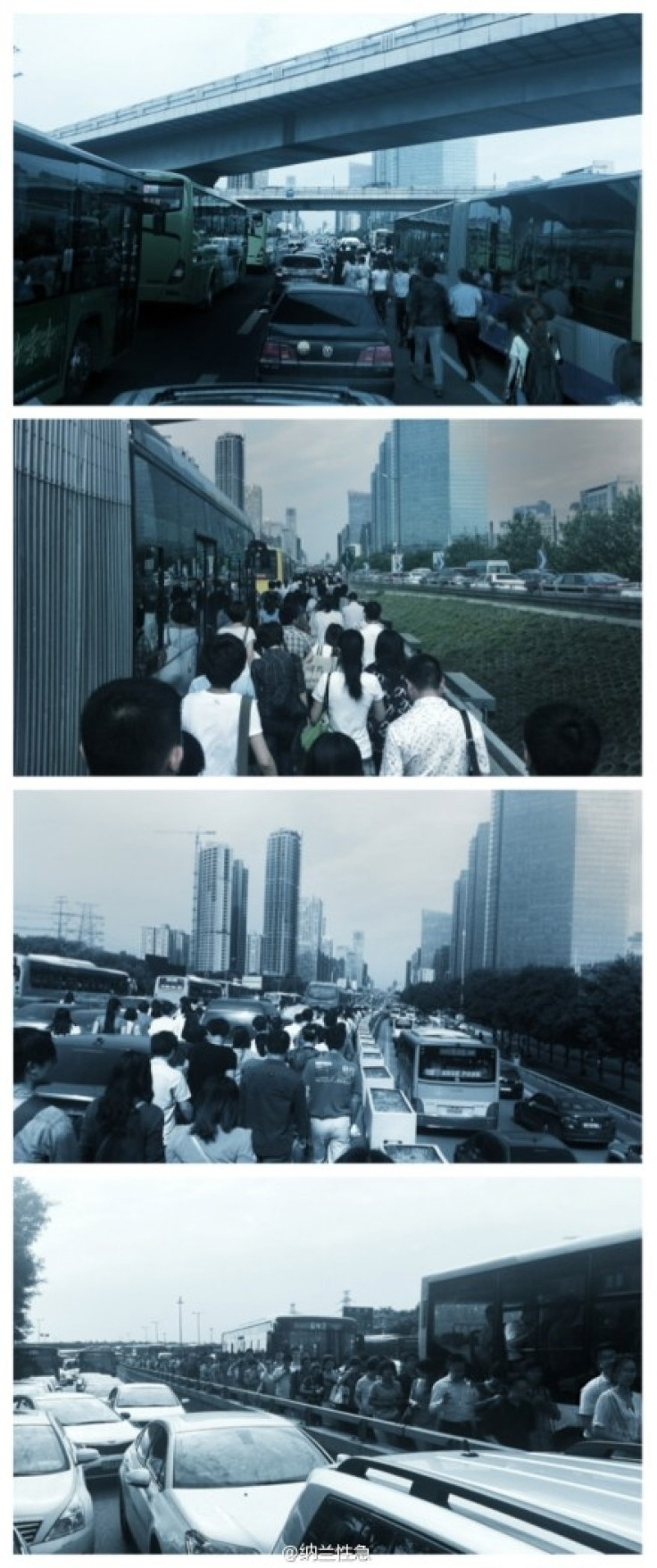Beijing 'Zombie Apocalypse' Traffic Jam: Commuters Leave Behind Vehicles In Rush Hour Traffic [PHOTOS]

Monday morning’s commute to work in China’s capital looked more like a scene out of a Hollywood zombie flick than the beginning of the workweek. Commuters in Beijing fed up with the tremendous amount of traffic on their way to work ditched vehicles and opted to walk along a city freeway to get to work.
Photos of droves of commuters during rush hour traffic walking and weaving through the dense morning traffic spread online. Frustrated with the slow-moving traffic that was going at “millimeters per minute,” as the South China Morning Post puts it, people got out of their cars and off public transportation and opted to just walk. Many on Weibo likened the scene of abandoned vehicles and sleepy “drone-like” people to “some sort of zombie apocalypse.” Some had fun with it on the Twitter-like microblogging platform, adding filters to photos taken at the scene, making it resemble an apocalyptic atmosphere.

Beijing is home to some of the world’s most notorious traffic jams. With an estimated 5.2 million registered private vehicles in Beijing’s city limits in addition to public transportation, rush hour traffic often leads to gridlock. In 2010, the city broke a record when a traffic jam lasted for 12 days.
© Copyright IBTimes 2024. All rights reserved.












